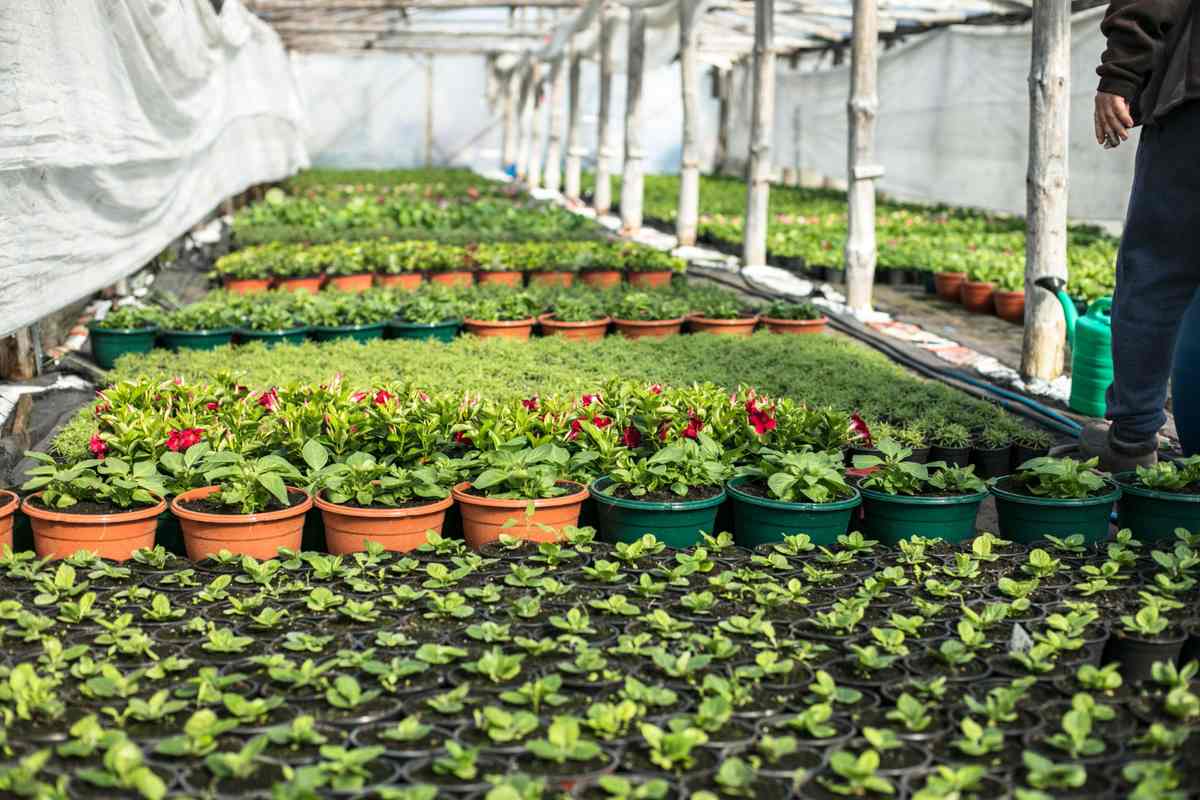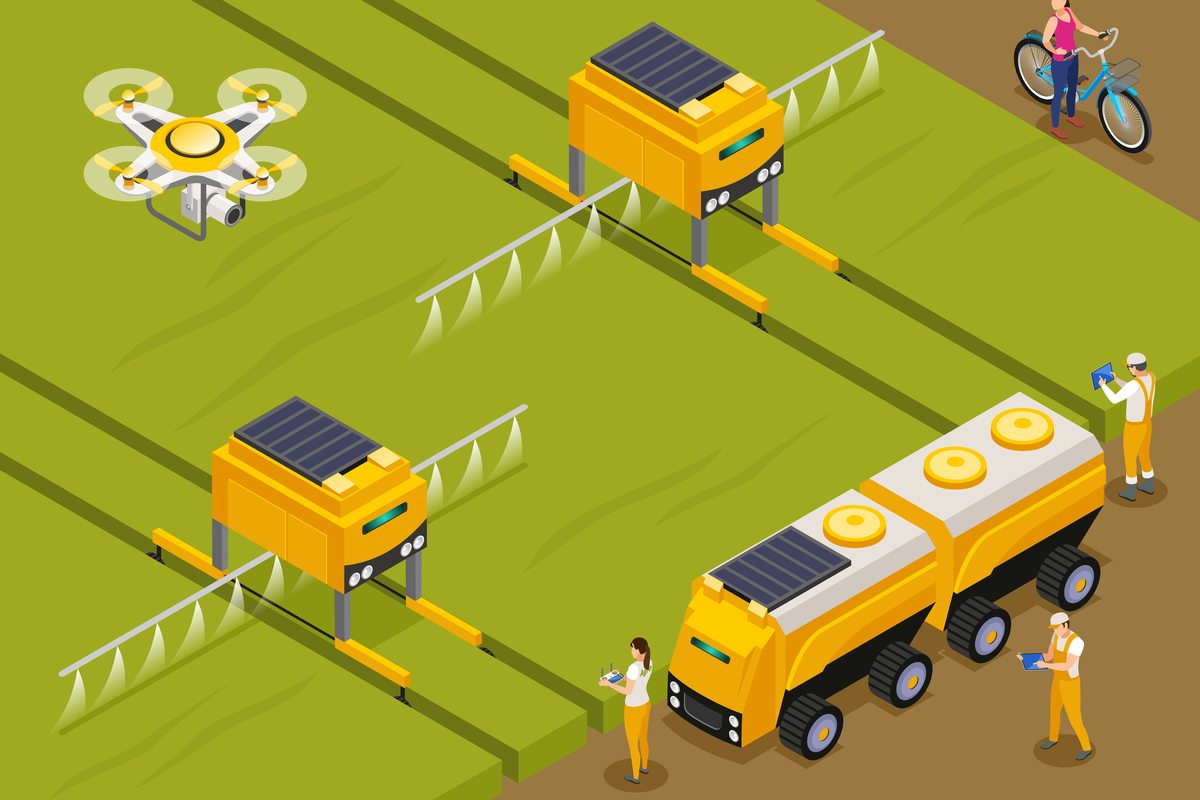Nurseries are essential in agriculture for propagating and nurturing plants before they are moved to their final growing spot. They help in cultivating various plants like fruits, vegetables, ornamental plants, and trees by providing ideal conditions for growth. Nurseries aid in developing robust root systems and ensuring the health and vitality of young plants. Farmers and gardeners benefit from nurseries by increasing crop success rates, prolonging growing seasons, and effectively handling plant production. Moreover, nurseries utilize methods like grafting, budding, and tissue culture to enhance genetic diversity and resilience in propagated plants.
Nurseries play a crucial role in agriculture by providing various benefits that improve the effectiveness, output, and longevity of plant growth. However, it is important to address and handle the drawbacks associated with nurseries. In this article, we will discuss in detail the advantages and disadvantages of nursery in agriculture.
Table of Contents
Advantages of Nursery in Agriculture

1. Controlled Environment
Nurseries offer a controlled environment with regulated temperature, humidity, light, and ventilation to ensure ideal growing conditions for young plants. This protection shields plants from adverse weather conditions, pests, and diseases, ultimately increasing the survival rate of seedlings.
2. Improved Plant Quality
Plants grown in nurseries tend to be healthier and more vigorous due to the controlled conditions and careful management. Nurseries allow for uniform growth, producing plants that are more consistent in size and quality, which is beneficial for commercial agriculture.
3. Efficient Resource Use
Nurseries are able to conserve water by using controlled irrigation systems, which help reduce wastage. Additionally, the precise application of fertilizers and nutrients ensures that plants get the right amount they need, which in turn minimizes nutrient runoff and environmental impact.
4. Extended Growing Seasons
Nurseries make it possible to grow plants all year round, no matter what the weather is like outside. This extends the time for growth and boosts productivity. Farmers can get a head start on growing plants in the nursery and then move them outside when the conditions are right, which means they can have several crop cycles in one year.
5. Higher Germination Rates
Seeds germinate more successfully in the controlled environment of a nursery, leading to higher germination rates and better use of seed resources. This increased germination rate helps minimize seed waste, lowering costs and increasing efficiency.
6. Efficient Land Use
Nurseries maximize space by growing a large quantity of plants in a small area. While plants are growing in the nursery, farmers can prepare the field, ensuring that the land is ready for transplanting when the seedlings are mature.
7. Disease and Pest Management
Plants grown in nurseries are protected from common pests and diseases found in open fields, which helps lower the chances of infestations and outbreaks. In case any diseases or pests do show up, it’s easier to control them in a controlled nursery setting, reducing the need for extensive pesticide use.
8. Economic Benefits
Growing strong seedlings in nurseries can help cut down on production costs by reducing losses and enhancing the quality of the yield. Healthier seedlings mean more robust and productive plants, which ultimately lead to increased yields and improved economic returns for farmers.
9. Enhanced Propagation Techniques
Nurseries enable advanced propagation techniques such as cloning and grafting, which can produce plants with desirable traits more consistently. They support the production of genetically diverse plants, which can be more resistant to diseases and environmental stresses.
10. Support for Research and Development
Nurseries offer a controlled environment for agricultural research, enabling scientists to test out different plant varieties, cultivation methods, and pest management strategies. The findings from nursery-based research can lead to innovative practices and technologies that benefit the wider agricultural community.
Disadvantages of Nursery in Agriculture

1. High Initial Costs
Setting up a nursery requires significant financial investment in infrastructure, such as greenhouses, shade nets, irrigation systems, and temperature control equipment. You also have to budget for maintaining these facilities and cover costs for heating, cooling, and lighting.
2. Labor Intensive
Nurseries need experienced workers to handle tasks like planting, grafting, watering, fertilizing, and pest control. This leads to higher labor expenses. Constant supervision is necessary for the plants in nurseries to thrive, making it a laborious and time-consuming process.
3. Space Requirements
Nurseries need a lot of land, taking away space that could be used for growing crops directly. This can be a disadvantage, especially in regions with limited available agricultural land. Efficient space management within the nursery is essential to maximize the use of available areas, which can be challenging.
4. Pest and Disease Management
Nurseries with a high concentration of plants can make it easier for pests and diseases to spread quickly, leading to expensive and challenging management. Managing pests and diseases often requires the use of chemicals, which can have negative environmental impacts and may pose health risks to workers.
5. Water Management
Nurseries often need a lot of water for watering plants, which can put a strain on local water sources, especially in dry areas. It’s important to closely monitor the water quality in nurseries to avoid introducing harmful contaminants that could damage plant growth.
6. Transplant Shock
Plants that are raised in nurseries might go through transplant shock when they are transferred to the field, as they adjust to different environmental factors. This adjustment period can lead to stunted growth or even plant death. Shifting plants from the consistent soil conditions of a nursery to the unpredictable soil conditions in the field can create obstacles to root development and overall plant well-being.
7. Limited Genetic Diversity
Many nurseries use clonal propagation to produce uniform plants. While this ensures consistency, it can also reduce genetic diversity, making plants more susceptible to diseases and pests.
8. Environmental Impact
Fertilizers and pesticides used in nurseries can cause runoff, polluting nearby water sources and soil. Nurseries produce different kinds of waste, like plastic pots, trays, and plant leftovers, which must be handled properly to reduce harm to the environment.
Conclusion
In conclusion, agricultural nurseries have both advantages and disadvantages. On one hand, they create ideal conditions for plant growth, resulting in stronger and healthier plants. They also help in managing plant production efficiently, increasing crop success rates. Moreover, nurseries allow for the use of advanced propagation techniques, improving genetic diversity and plant quality. However, challenges like high initial investments, maintenance costs, and pest issues in crowded areas exist. Additionally, specialized knowledge and labor are needed for effective nursery management, which can be a hurdle for some farmers. Despite these drawbacks, nurseries play a vital role in modern agriculture, enhancing sustainability and productivity in farming.








Thank you 🙏 it was really helpful